August To Early September
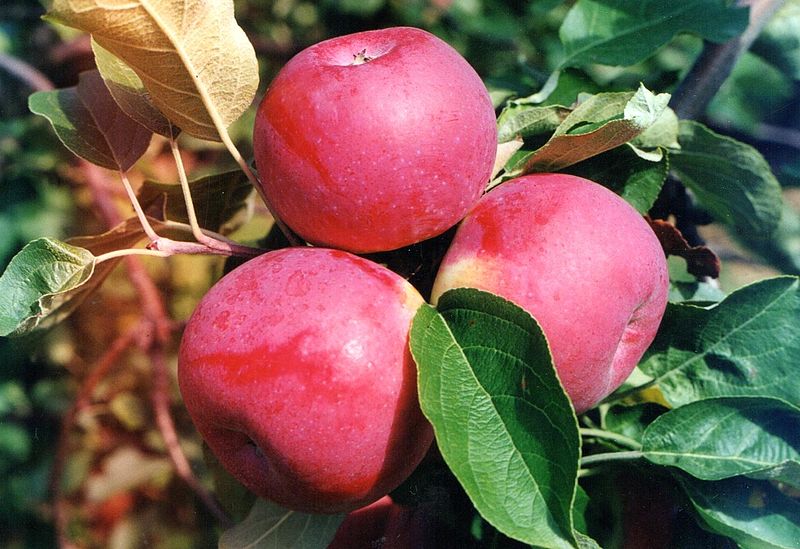
Paula Red Apples
The earliest good eating apple. Full, tart flavor with crunch, similar to Cortland. Paula Reds don’t store well so eat them quick. Fresh eating, sauce, pies. Introduced in Michigan, 1967.

Jersey Mac Apples
Jersey Mac apple is a medium-sized red apple with yellow/green splashes. Flesh is crisp and juicy with a tart flavor. It is an excellent snacking apple, that is very similar to its cousin the McIntosh.
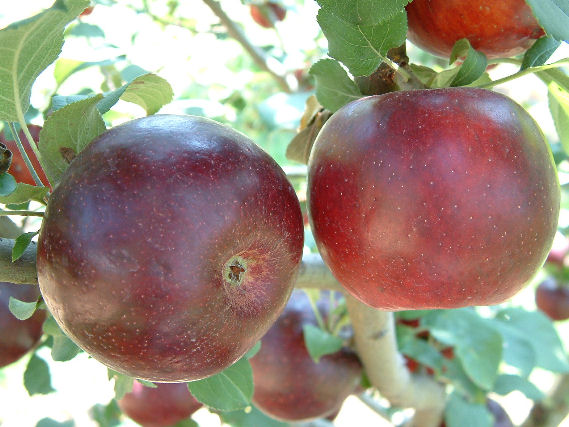
Burgandy Apples
Burgundy are large-sized apples with very deep red, smooth, glossy skin. Inside, they have crisp, sweet flesh with a touch of sourness to its taste. When ripe, the apples will stay on the trees for up to 3 weeks.

Red Fuji Apples
Its harvest season extends from the middle of August to mid-September. Fruit on 1-year-old wood is usually small. Galas are crisp and juicy off the tree. They tend to develop cracks in the stem bowl when overmature.
Mid September

CrimsonCrisp Apples
Very crisp, juicy. Sweet/tart eating.
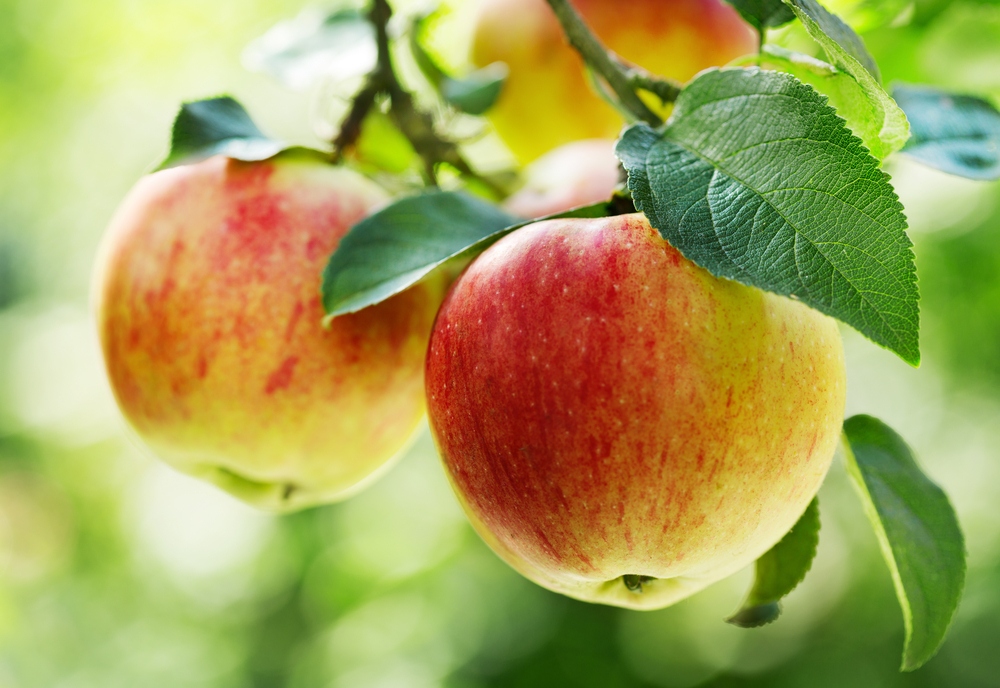
Gala Apples
A new standard for crispness and flavor. This rock-hard apple has a mild sweet flavor and yellowish flesh. Good eating out of storage. Fresh eating, salads. Introduced in New Zealand, 1965.
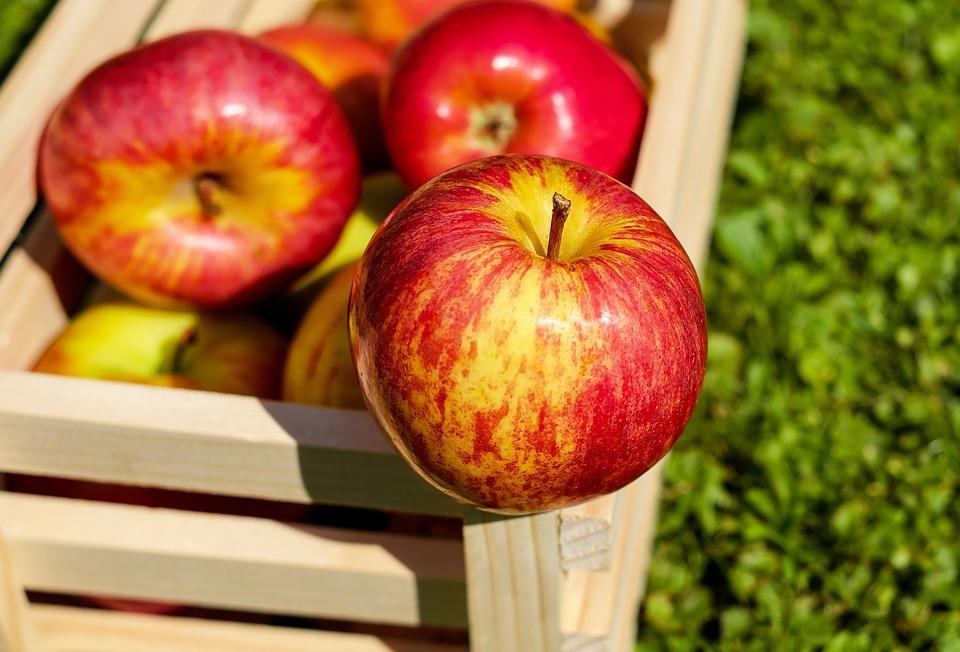
Macintosh Apples
Granddaddy of the New York apple industry. Sweet to tart, highly aromatic flavor. Fresh eating, sauce. Some people bake with Macs; however, the slices lose their shape when used in pie, crisp, and other baked dishes. Discovered in Ontario, 1811; introduced 1870.
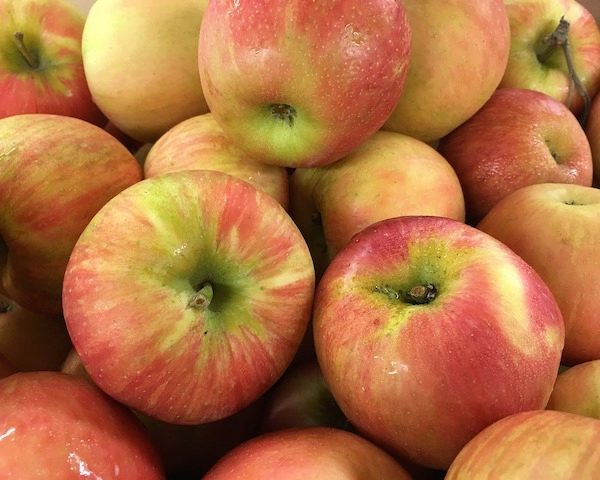
Honeycrisp Apples
Extremely, explosively crisp and juicy with a well-balanced sweet/tart flavor. This one-of-a-kind apple gets its great eating character from its uniquely oversized cells. While the flesh of other apples cleaves between cells, leaving the cell walls intact, when bitten, Honeycrisp’s extra-large cells burst open, releasing a mouthful of juice. Flesh is slow to turn brown when cut. Fresh eating, cooking, salad. Slices hold their shape in pies. Stores for months and months and stays crisp. Introduced in Minnesota, 1991.

Sweet Sixteen Apples
This apple is pretty to look at and a treat to eat. The creamy-yellow flesh if crisp and juicy, the flavor is sweet. But wait, there’s more! Sweet Sixteen has a distinctive flavor, variously described as anise, almond, bubble gum, spice, or cherry candy. Try it and see! Introduced in Minnesota, 1977.
Late September
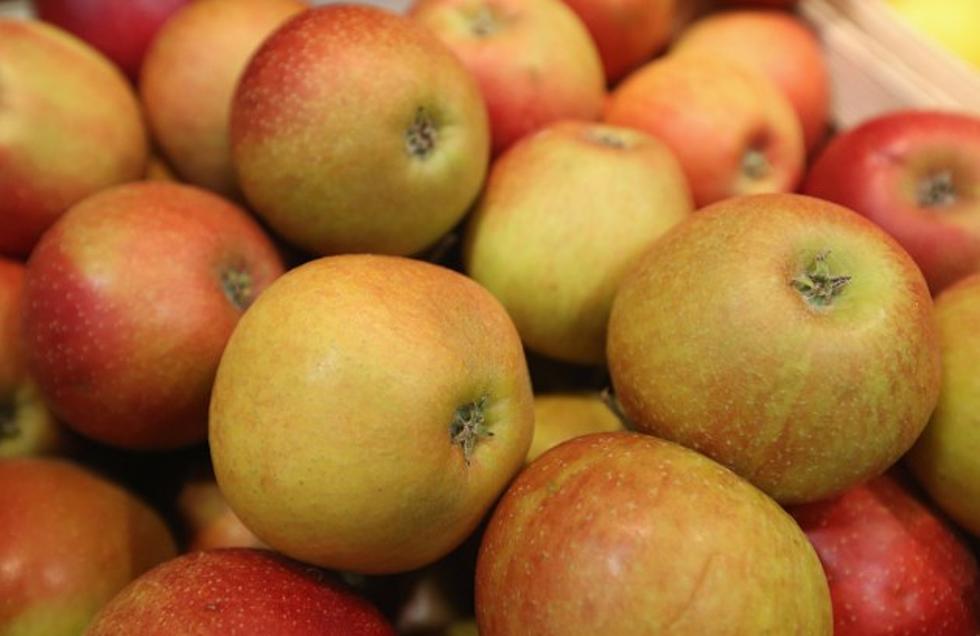
Cortland Apples
Sweet to tart, very aromatic flavor reflects Mac parentage. Pure white flesh is slow to turn brown when cut. Great range in size makes for lots of snack-sized and cooking apples. Cortland is the apple I use to make pies. Fresh eating, cooking, salad. Introduced in New York, 1915.
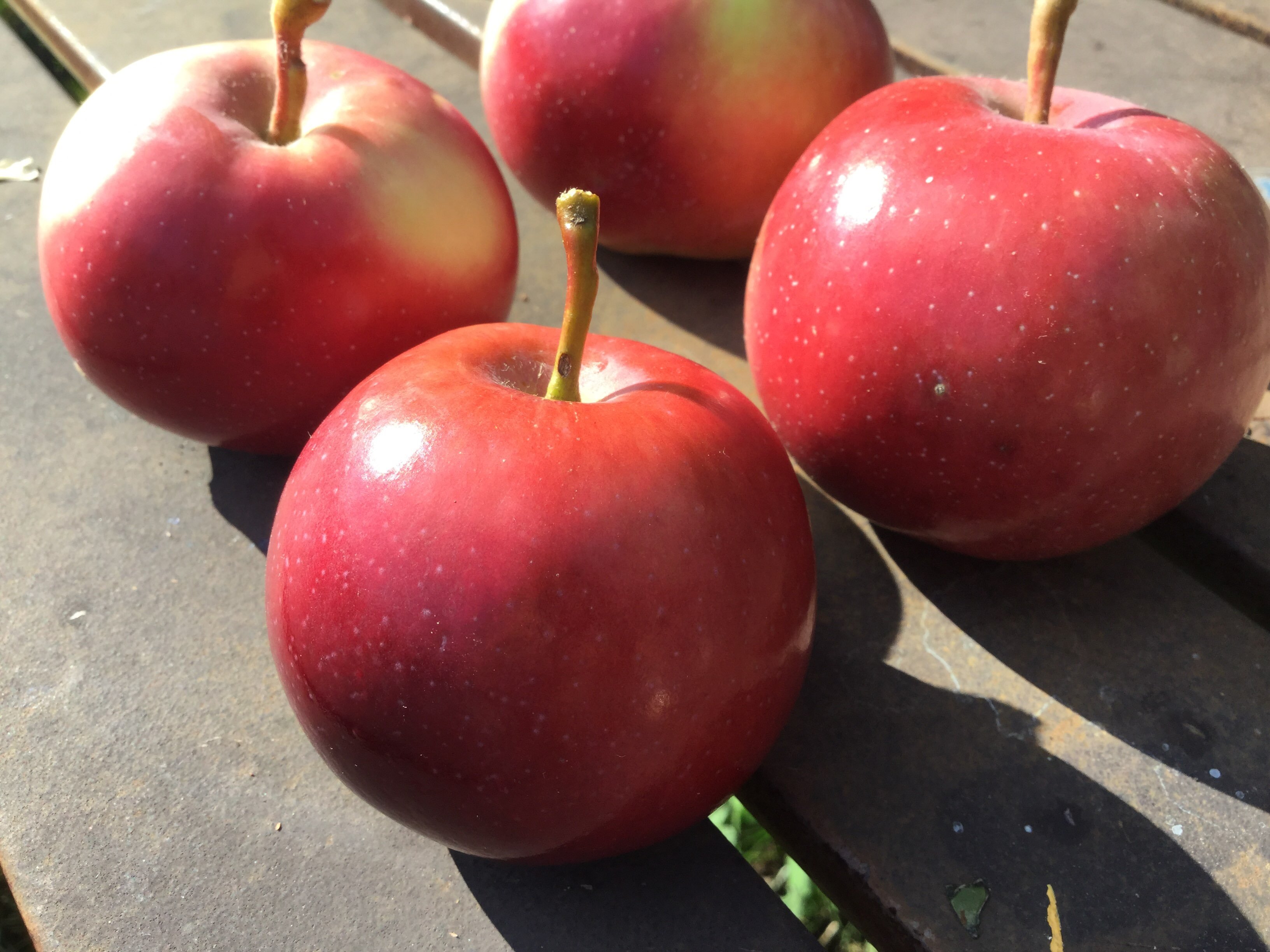
Empire Apples
Rich flavor with a balance of sweet and tart, juicy and crisp. Our U-pick customers’ favorite variety, its character changes throughout the harvest like no other. Empires you find in grocery stores are always from the earliest pickings, and can be bland. Allowed to ripen fully on the tree, Empires develop a glorious aroma and bold taste. Late on the tree, Empire is my favorite apple. Keeps well. Multi-purpose apple good for fresh eating and cooking. Introduced in New York, 1966.
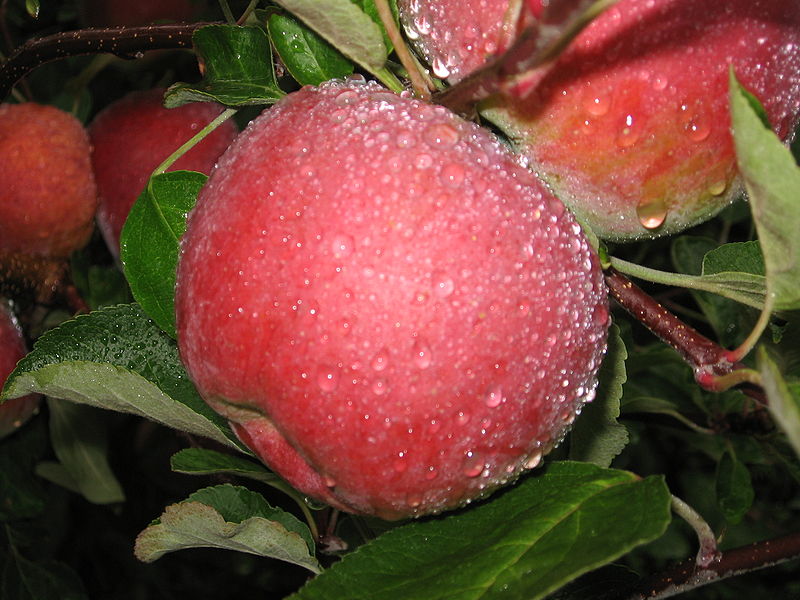
Macoun Apples
Macoun is another apple that benefits from full tree ripening, with an aromatic, Mac-family flavor that can’t be found in store-bought specimens. Our juiciest apple by far, a northeastern rival of the similarly colored Winesap. Judy’s favorite apple. Not a great keeper, so eat them as they ripen, then wait for next year. Introduced in New York, 1923.
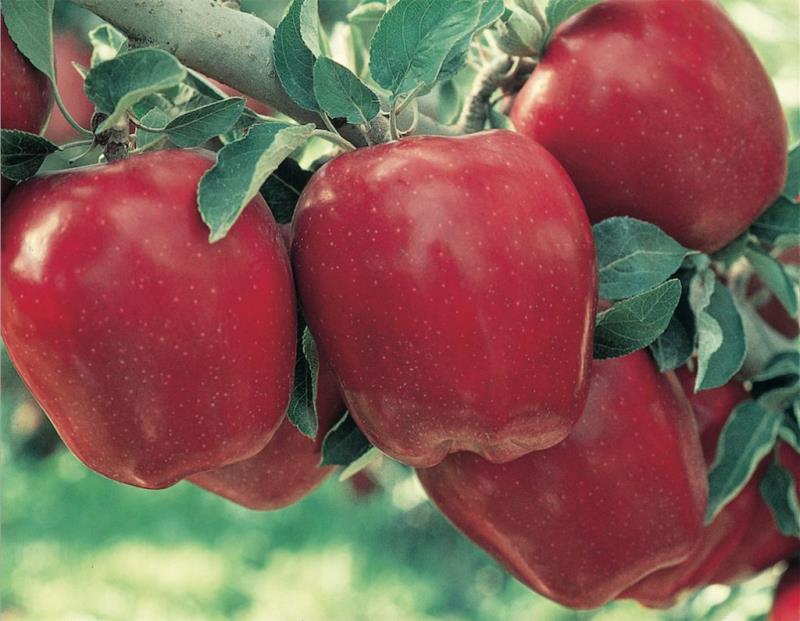
Red Delicious Apples
Coarse textured, firm and sweet. Not recommended for baking, but a traditional favorite for fresh eating, salads, and dried apples. Can you say “damning with faint praise”? This Western standard will always be popular. It’s fun to grow, and we endeavor to produce as fine a Red Delicious as you can find anywhere. Introduced in Iowa, 1894.
Early October
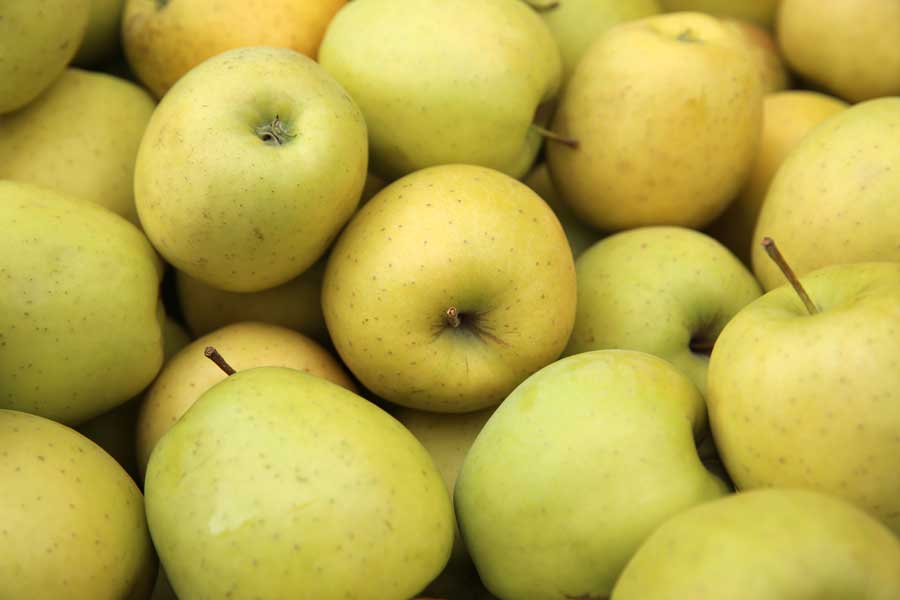
Golden Delicious Apples
Fine-textured, sweet and juicy, with a mild flavor and a super-thin skin. Excellent for fresh eating and good for baking, too (use less sugar than with other varieties in recipes). An excellent subject for dried apples. Stores well and shares no parentage with Red Delicious. Introduced in West Virginia, 1912.
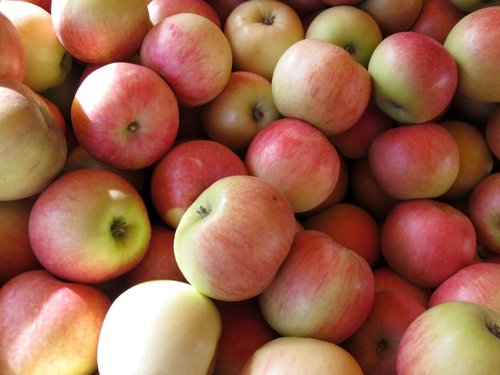
Jonagold Apples
An amazing combination of high sugar—the highest of any apple—with a perfect balance of acidity is what makes Jonagold a boldly flavorful apple. Juicy, crisp, and often very large. Of the truly two-colored apples, Jonagold is the prettiest by far, with beautiful creamy-yellow flesh. Brings great flavor to apple dishes, but the sauce can be thin. My brother Dave’s favorite apple. Not a long-range keeper. Introduced in New York, 1968.
Mid-October
Jonathan Apples
The Jonathan apple is a medium-sized sweet apple, with a touch of acid and a tough but smooth skin. It is closely related to the Esopus Spitzenburg apple, good for eating fresh and for cooking.

Red Jonathan Apples
This fruit may be a little less persistent at ripening than its counterpart the early harvest, but the red Jonathan is still packed with a succulent taste—tart and well-balanced. It’s a great apple for fresh eating, freezing and cooking.
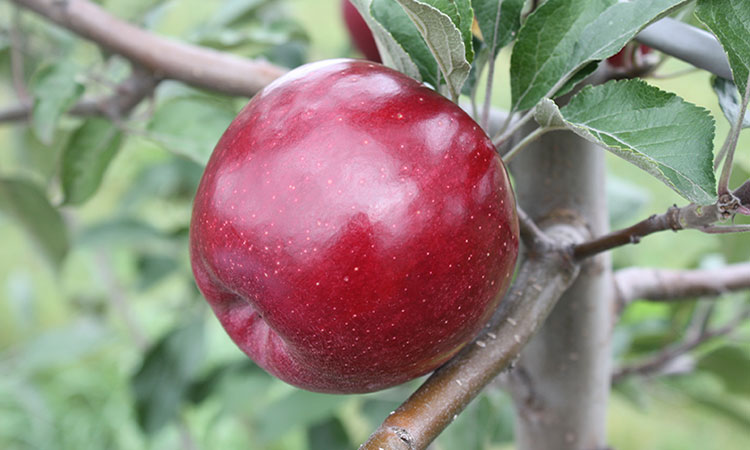
Northern Spy Apples
The ultimate for apple crisp, this truly local variety has a loyal cult following. Northern Spy is large and pink-fleshed with a snappy tart flavor. Unlike other cooking apples, this one is tasty enough to be eaten out of hand or sliced and spread with peanut butter. The slices stay firm in pies and hold their shape. Try it baked, too. Found in East Bloomfield, NY, around 1800.
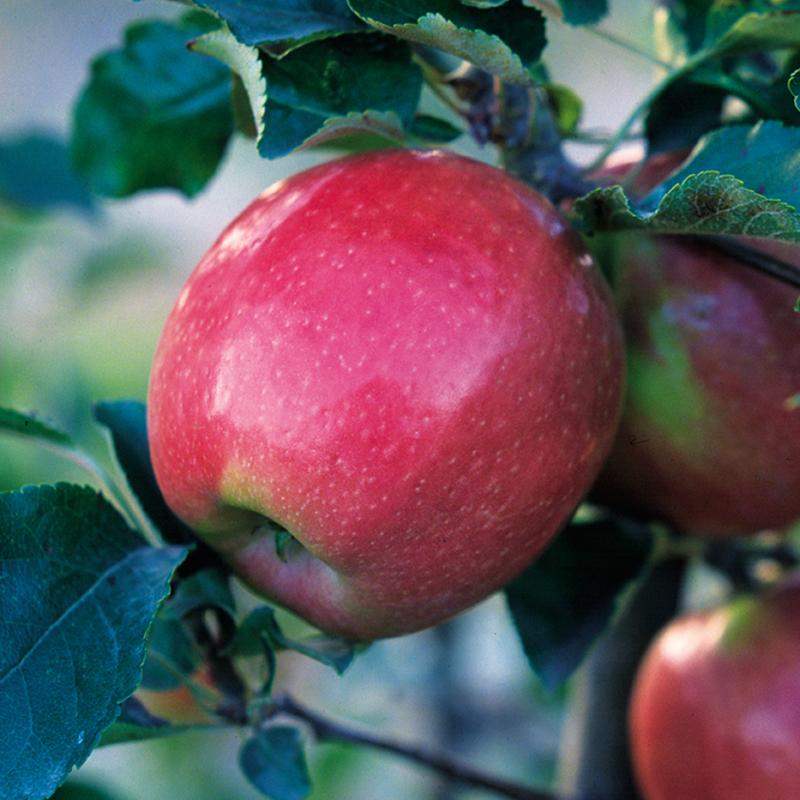
Braeburn Apples
A popular commercial apple, Braeburns have a crisp, spicy-sweet flavor. … You can also use it for baking — it makes a nice flavorful apple pie. Gala: This variety was discovered in Canada and is considered one of the best apples to eat raw. The flesh is firm and crisp with a sweet vanilla-like flavor.
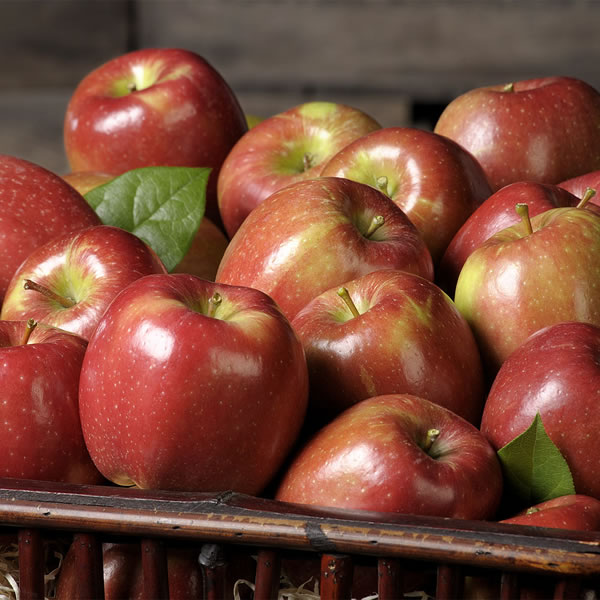
Braestar Apples
A popular commercial apple, Braeburns have a crisp, spicy-sweet flavor. … You can also use it for baking — it makes a nice flavorful apple pie. Gala: This variety was discovered in Canada and is considered one of the best apples to eat raw. The flesh is firm and crisp with a sweet vanilla-like flavor.
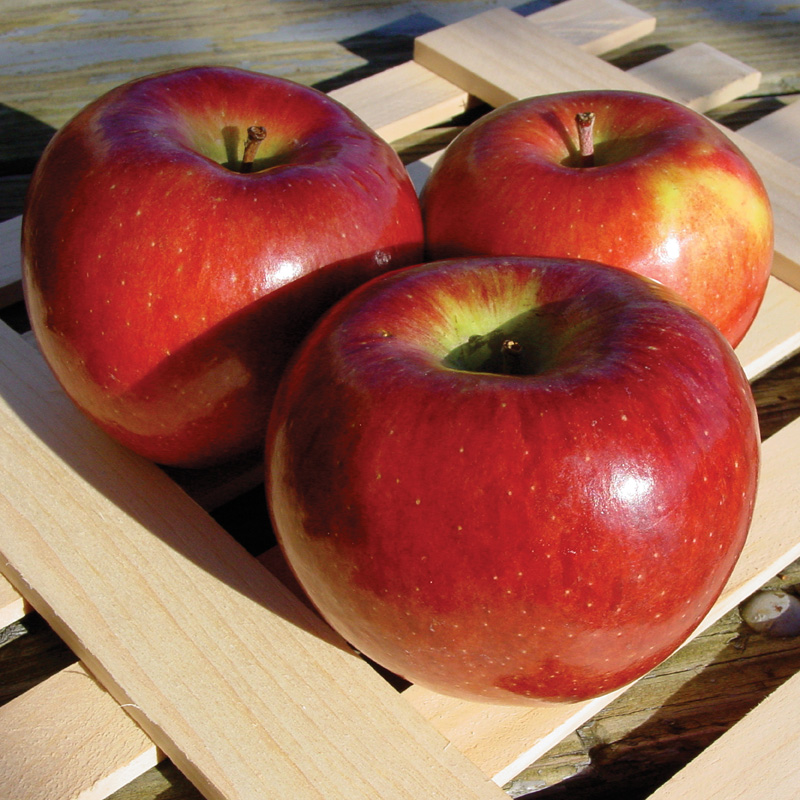
Crispin Apples
Looks like its parent, Golden Delicious, but don’t let looks fool you. This large and bulbous variety packs a zippy, flavorful punch, a good, full blend of sugar, acid, juice and crunch. Flesh stays white when cut—partner it with Empire for a great fruit salad. Ray’s favorite apple. Introduced in Japan as ‘Mutsu,’ 1930s.

